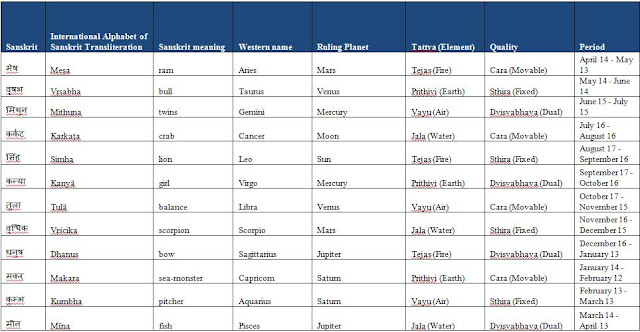In Western Astrology, the nodes are about a person’s spiritual evolution and our karmic pattern and baggage. While the South node signifies what we have experienced in the past and what we have to let go of, the North node is our destiny and where we are headed in this lifetime. The North node presents our challenge in life and the lessons we have to learn. The 17th century astrologer William Lilly described the North node as ‘of the nature of Jupiter and Venus and of himself a fortune. The Tail of the Dragon (the South Node) is quite contrary to the Head, for he is evil.’
Any conjunctions to the natal North node point towards particular life lessons and present a focal point in the chart.
In traditional Vedic astrology, Rahu and Ketu are naturally malefic points and are said to rule over certain signs alongside the planets. Rahu is said to be exalted in Gemini and rules the sign of Aquarius alongside Saturn and its characteristics and influence on the chart in nature are similar to that of Saturn. Rahu is intense and outrageous and doesn’t follow rules. With its rulership of Aquarius, it is said to bring everything that is ‘foreign’ into a person’s life but also magnifies everything it touches. It is dark, builds up illusions only to let the bubble burst again at a later point. In Vedic astrology, the times in life a person is under the influence of Rahu are said to be the more difficult ones. Although full of experience of the ‘other’ which can be enriching in itself, these times also entail a sudden loss, for example, financially, that is said to be regained when Jupiter and in some cases Saturn, as the great stabiliser, makes their mark. Having said that, this is a traditional point of view from a time the thought that everything different and foreign is bad, prevailed.
Ketu co-rules over Scorpio alongside Mars and Pluto and displays similar characteristics of both planets. According to some schools of thought, it is exalted in Sagittarius. Where Rahu is materialistic and represents knowledge, Ketu is spiritual, psychological and represent that which liberates us. Depending on its position on the chart and aspects, Ketu also gives sudden loss or gain.
An example of a Rahu / Ketu transit demonstrates that (I’ve used the sidereal chart here but remember that the aspects and house positions of the transits are the same as with the tropical chart!):
In this chart, for
the whole of 2011, the nodes have been transiting the 2nd (Ketu) and
8th (Rahu) houses putting the focal point in the chart on the
person’s own income as well as joint resources and other people’s money (also
that of the bank) as well as budgeting. The 8th house also signifies
transformation, often life changing and with its association to Mars it is
often drastic and sudden. Two years ago, the person bought a property with a
partner, when Saturn was conjunct the Moon. Although planned as a longer-term
arrangement, in November 2011, due to a sudden shift in circumstances, one of
the partners decided to sell his share of the property. The full Moon in
December 2011 conjunct Ketu and with the Sun opposite, conjunct Rahu meant the person’s focus was put on making
suitable financial arrangements to keep the property. While the full Moon
firmly put the focus on sorting out own and joint finances as well as dealing with
financial institutions, the Rahu / Ketu transit that still continues until late
2012 ensures that the subject will still be on the person’s mind for some time
and that the whole process is not likely to end before then. With the ongoing
Uranus opposition to the natal Moon, the development was sudden and disruptive.
Also note how the Moon rules the 4th house of the home and property.



